Fall Protection
When examining traumatic construction fatalities in Ontario, falls are the number one killer. All falls are preventable with the use of appropriate fall protection systems. Each employer must evaluate the work process and decide on the appropriate system to protect their employees.
Fall Prevention includes:
- Proper use of worksite access such as ladders and scaffolds
- Protective covers over floor and roof openings
- Warning barriers and bump lines
- Guardrail systems
- Travel restraint systems
Guardrails are the best method of protecting workers around openings in floors and roofs, but sometimes they’re not practical. For working around holes or openings on floors, it may be better to securely fasten covers made of planks, plywood, or steel plates over the opening. Covers must be strong enough to support any weight to be reasonably expected. A guardrail system that meets the requirements of O.Reg 213 and shall be used if a worker has access to the perimeter or an open side of any of the following work surfaces and is exposed to a fall of 2.4 metres or more:
- A floor, including the floor of a mezzanine or balcony;
- The surface of a bridge;
- A roof while formwork A system of forms connected together is in place; and
- A scaffold platform or other work platform, runway or ramp.
Travel Restraint Systems (TRS) let a worker travel just far enough to reach the edge but not far enough to fall over.The basic Travel Restraint System (TRS) consists of;
- CSA approved full body harness;
- Lanyard;
- Lifeline;
- Rope grabs to attach harness or lanyard to lifeline;
- Adequate anchorage (capable of supporting a static load of 2 kilonewtons – 450 pounds – with a recommended safety factor of at least two (2) that means 4 kilonewtons or 900 pounds).
Where workers cannot be protected from falls by guardrails or travel restraints, they must be protected by at least one of the following methods;
- Fall restricting system;
- Safety net;
- Fall arrest system.
In the event of a fall, the above systems must keep a worker from hitting the ground, the next level below, or any other objects below.
A Fall Restricting System is designed to limit a workers free fall distance to 0.6 metres (2 feet).
A Safety Net System must be designed by a professional engineer. The system is installed below a work surface where a fall hazard exists.
It is also very important to follow manufacturer’s guidelines on all fall protection equipment and inspect before each use. Using an inspection checklist will ensure workers are using equipment that is safe and free of defects.
Fall Protection Training
On June 12, 2002, the Regulation was amended by adding:
- The employers shall ensure that workers who use fall protection systems are adequately trained
- The person who provides the training prepares a written record
- The training records shall be available to an MOL inspector on request.
Safety First Consulting can provide Fall Protection Training for all your workers. Call us today to arrange training 905-669-5444.
Feel free to contact our safety consultant team here.

